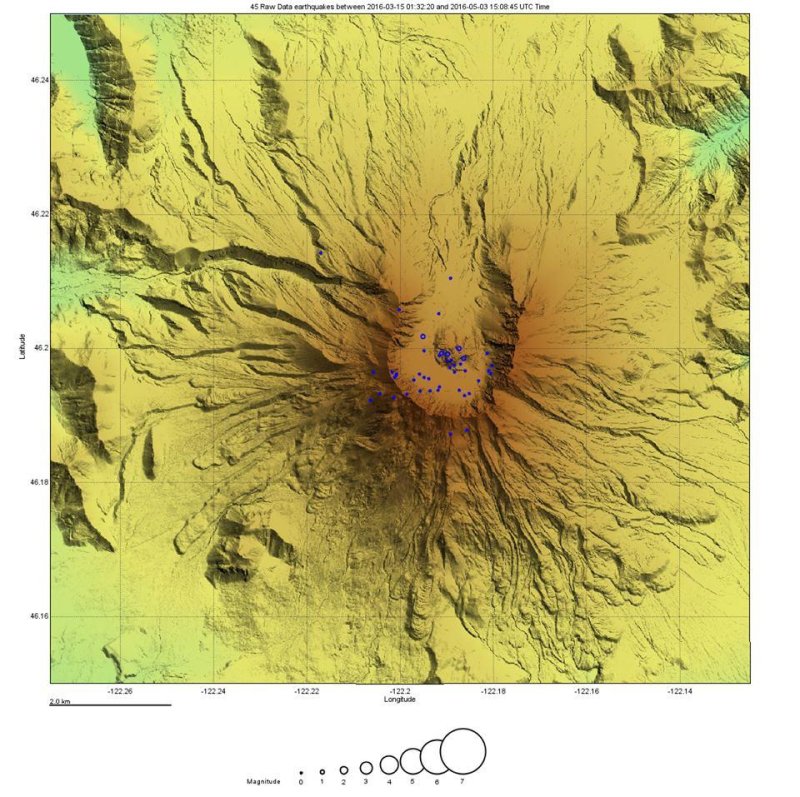Navigation
Install the app
How to install the app on iOS
Follow along with the video below to see how to install our site as a web app on your home screen.
Note: This feature may not be available in some browsers.
More options
You are using an out of date browser. It may not display this or other websites correctly.
You should upgrade or use an alternative browser.
You should upgrade or use an alternative browser.
St Helens Vid...
- Thread starter dmp
- Start date
waltky
Wise ol' monkey
Mt. St. Helens gettin' ready to blow again?...

Scientists: Earthquake swarms detected beneath Mount St. Helens
May 7, 2016 -- Scientists said a number of low-magnitude earthquakes taking place beneath Mount St. Helens could be the result of the volcano slowly recharging.

Scientists: Earthquake swarms detected beneath Mount St. Helens
May 7, 2016 -- Scientists said a number of low-magnitude earthquakes taking place beneath Mount St. Helens could be the result of the volcano slowly recharging.
More than 130 earthquakes have been detected in the area around the volcano since March 14, the U.S. Geological Survey said. The largest quake measured a magnitude of 1.3 with most having magnitudes of 0.5 or less. The USGS said Mount St. Helen is likely recharging its magma chamber, causing stress on the earth's crust and producing small earthquakes. "There is absolutely no sign that it will erupt anytime soon, but the data we collect tells us that the volcano is still very much alive," the USGS said.

Mount St. Helens has been one of the most heavily monitored volcanoes in the world since its catastrophic eruption in 1980. The USGS has tracked similar patterns with the volcano throughout the years since then. "The current pattern of seismicity is similar to swarms seen at Mount St. Helens in 2013 and 2014; recharge swarms in the 1990s had much higher earthquake rates and energy release," scientists said. "As was observed at Mount St. Helens between 1987-2004, recharge can continue for many years beneath a volcano without an eruption."
The USGS said there are no signs of an imminent eruption at Mount St. Helens. There have been no anomalous gases, increases in ground inflation or shallow seismicity with this swarm. "Each volcano behaves a little differently," the USGS stated. "Research has led to a greater understanding of seismic signals and improved our ability to characterize what is going on at depth, and, if needed, provide eruption warnings."
Scientists: Earthquake swarms detected beneath Mount St. Helens
Similar threads
- Replies
- 8
- Views
- 141
- Replies
- 74
- Views
- 818
- Replies
- 2
- Views
- 86
- Replies
- 2
- Views
- 74
Latest Discussions
- Replies
- 29
- Views
- 422
- Replies
- 4K
- Views
- 143K
Forum List
-
-
-
-
-
Political Satire 9269
-
-
-
-
-
-
-
-
-
-
-
-
-
-
-
-
-
-
-
ObamaCare 781
-
-
-
-
-
-
-
-
-
-
-
Member Usernotes 497
-
-
-
-
-
-
-
-
-
-